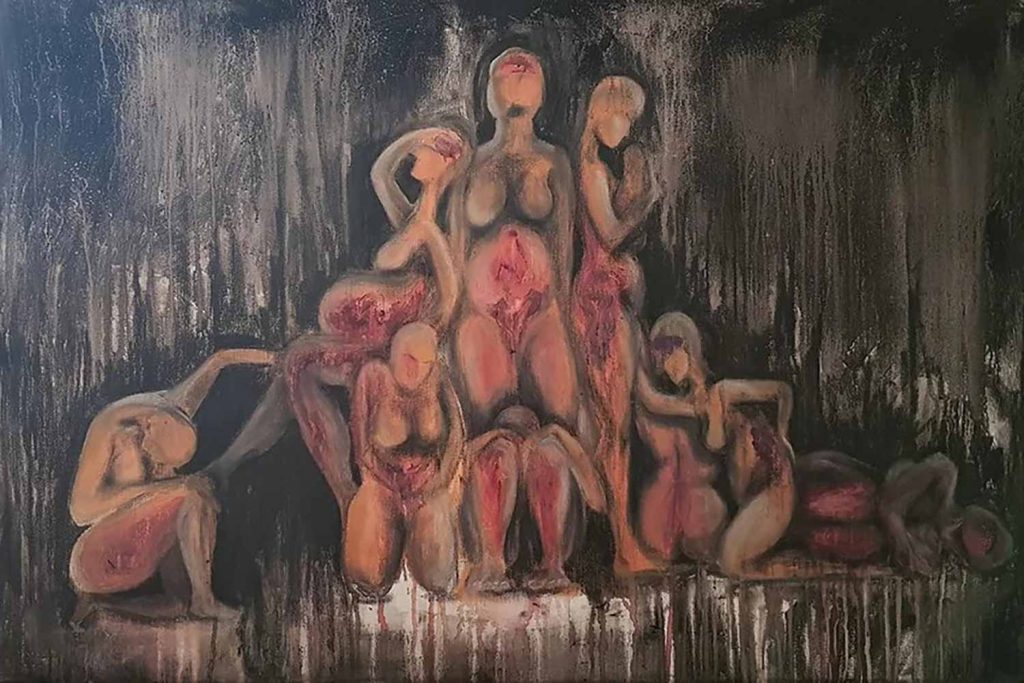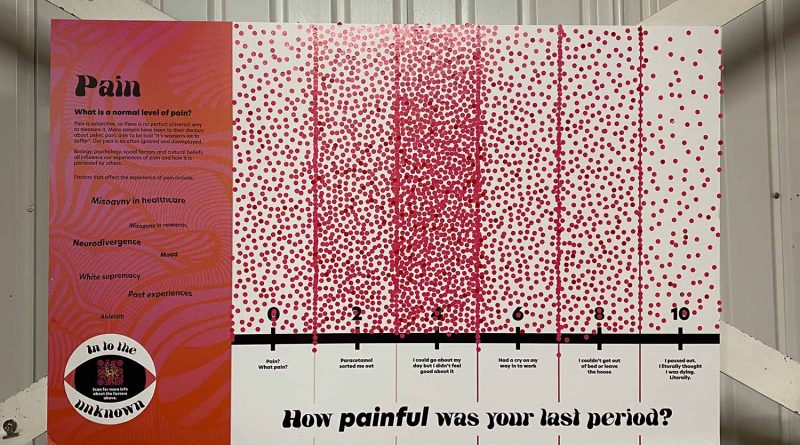‘Endometriosis: Into the Unknown’: The Vagina Museum’s mission to break the silence
The Vagina Museum’s no-holds-barred exhibition on endometriosis asks why we know so little about a condition that affects one in ten women in the UK.
Talk to any woman and they’ll know a woman who has suffered period pain so crippling they couldn’t leave the house. Pain that’s led to cancelled plans, absences at work and multiple visits to the GP which, almost invariably, end in vain.
Endometriosis is a condition that affects 1.5 million people in the UK. Yet, only 54% of people in the country know what it is.
With its exhibition ‘Endometriosis: Into the Unknown’, the Vagina Museum in Bethnal Green has made it its mission to combat the alarming lack of awareness that surrounds the condition.
It is the museum’s first exhibition since reopening its doors last November under the converted arches off Cambridge Heath Road. The first time I visit, I wander straight past it. Its discrete exterior is quite the contrast from the vagina-themed *everything* that awaits you inside.
The exhibition sends visitors on an educational journey exploring the latest research on endometriosis, the common myths that accompany it, and the lived experience of those whose everyday lives are affected by the condition.
Endometriosis is a condition where tissue that’s similar to the kind found in the uterus starts to grow in the pelvic area, and for some it can spread to the lungs and brain. It can cause a variety of symptoms including extreme period pain, heavy bleeding and fertility issues.
Currently, there’s no known cause and no known cure. The central question of the exhibition is this: Why do we know so little?
According to the Vagina Museum, it’s no mistake. The gendered nature of endometriosis has meant that for decades the condition has been under-researched and under-funded. For centuries, women reporting extreme period pain have been brushed off by medical professionals, misdiagnosed or told that their symptoms are psychological. Even now, 58% of patients with endometriosis visited their GP ten times before getting a diagnosis – taking an average of eight years to diagnose.
‘WHY are doctors still advising that I get pregnant?!?’, reads a post-it note left by a visitor on the ‘share your experience’ board at the entrance of the exhibition. I go on to learn that pregnancy as a cure for endometriosis is one of the most enduring myths that surrounds the condition – and that many GPs still recommend it even though for many women with endometriosis, getting pregnant is incredibly difficult.
The reality of living with chronic pain is displayed in artist Kumeri Bandara’s painting, ‘Living In My Body’. The artist depicts the torturous experiences of Elisa Matthews, who was told by a nurse to try getting pregnant to cure her endometriosis. As a result, she avoided hormonal contraception for six years, despite the fact it could have helped her manage the pain she was experiencing.

Similarly, Bonnie McRae’s film ‘All Up There’, which visitors can watch at the exhibition, is based on McRae’s personal experiences of dealing with endometriosis and her relentless attempts to get a diagnosis. It’s a frenetic and unflinching portrayal of how chronic pain seeps into every aspect of daily life, and how women have to fight to be heard and taken seriously in medical settings.
With a keen eye on intersectionality, the exhibition interrogates how an individual’s pain is perceived differently depending on factors such as gender, ethnicity and race, and how these factors too often determine who gets care and who doesn’t.
It asks visitors to consider and grade their own level of period pain, interrogating the idea of what society has told us is ‘normal’. As the exhibition explains, ‘normal’ is a word frequently flung around in conversations around women’s health, but it is often informed by outdated ideas or defined against the experiences of white males.
After the exhibition, I sit down next to a giant glittery tampon for a cup of tea in the museum’s queer-owned cafe, digesting everything I’ve learnt. The museum’s menu is extremely on-brand, serving ‘Queer Cookies’, ‘buxom beverages’ and ‘vulvaluptous bakes’.
While wandering back through the exhibition to the exit, I can hear conversations being sparked by men and women alike, exchanging stories and outrage in muffled voices. That’s what happens when people see their experiences recognised and reflected back at them – after being brushed under the carpet for so long.
‘Endometriosis: Into the Unknown’ is running until 3 March 2024, every Wednesday-Sunday. In the week, the museum runs Access Mornings for families, neurodivergent and d/Deaf visitors, and visitors who are Covid conscious. The exhibition is free and also available to at Vaginamuseum.co.uk.
If you enjoyed this article, you might like Oxford House exhibits ‘Women of Bethnal Green at Work’

